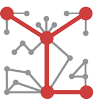Predictive analysis is the use of Big Data and machine intelligence to predict the likelihood of a specific outcome, such as a trial user becoming a paying customer. Marketers can theoretically apply those predictive insights to support lead generation and sales opportunities. However, to create campaigns that are measurable, marketers need insights that are actionable.
By homing in on small data, predictive insights become more actionable and practical. In other words, small data takes Big Data from theory to practice.
Is smaller really better?
Bigger isn’t always better, especially in predictive analysis. It’s a great starting point, but it can also be overwhelming and unmanageable.
Small data has been described as subsets or slices of Big Data, or the nuggets of actionable data resulting from the analysis of Big Data. Small data can also include the often overlooked customer detail typically found in unstructured data—such as in phone calls, emails, text chats, and the like.
Though the definitions of small data vary, they all hit on one important point: data must be small enough to be actionable, or it’s not useful.
Moreover, by using Big Data, marketers can gain a broad view of their target audiences.
Source: Customer Behavior – Small Data Plays a Big Role in Predictive Analysis : MarketingProfs Article



